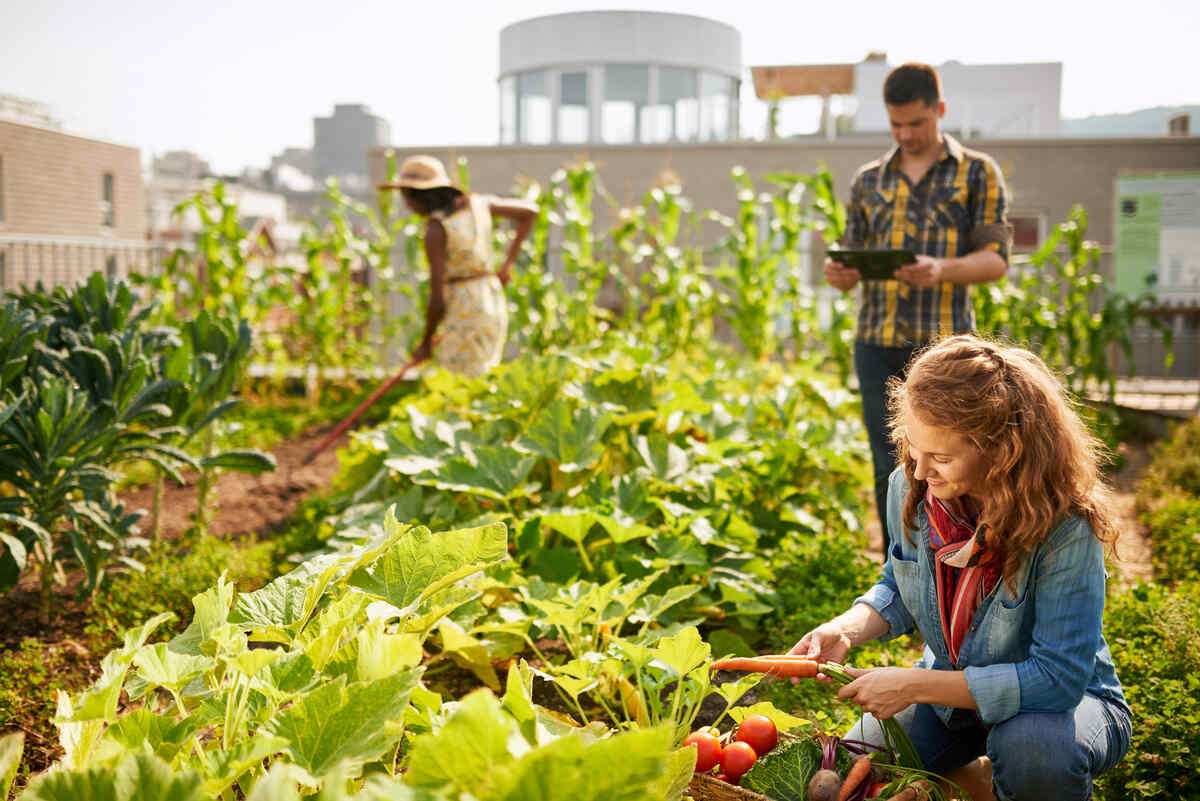Some Ideas on City Blooming You Should Know
Some Ideas on City Blooming You Should Know
Blog Article
City Blooming Fundamentals Explained
Table of ContentsAll about City BloomingThe Buzz on City BloomingNot known Facts About City BloomingThe Single Strategy To Use For City BloomingThe Single Strategy To Use For City Blooming
Fascinated in growing food for sale in the City of Chicago? Below is a listing of frequently asked concerns pertaining to the rules and regulations that cultivators need to take into consideration when intending a city agriculture task.
The zoning change does not change any various other codes taking care of composting, building authorizations, buying or leasing City possessed home, organization licenses or environmental contamination. There are existing codes that control these concerns and they remain in complete impact and might be applicable to your job. Community yards are normally had or managed by public entities, public companies or community-based companies and preserved by volunteers.
Urban ranches expand food that is meant to be offered, either on a not-for-profit or for-profit basis. Due to their commercial objective, urban farms need an organization certificate. Yes. A community garden is allowed to sell excess create that was grown on website if the sales are accessory or secondary to the yard's main objective explained over.
Things about City Blooming
Composting is allowed however only for plant material that is created and made use of on site. The amount of compost product can not exceed 25 cubic lawns at any type of provided time according to the requirements in 7-28-715 of the City's Municipal Code. Yes. Because the dirt at most brand-new yard websites needs modifying, compost, dirt, wood chips, or other products can be acquired to build or improve the growing area - sustainability.

If a building authorization is required then the hoophouse will certainly be thought about an accessory building. You can figure out more concerning the structure license needs by speaking to the Division of Buildings. The 25,000-square-foot dimension limit is meant to avoid a single area garden from dominating an offered block or interfering with the block's existing household or industrial character.
The restriction does not apply to gardens situated in Public Open Room (POS) areas. Can there be more than one area garden that is 25,000 square feet on a solitary block? Fencing is not needed, however, yards that have large car parking locations might be needed to mount fencing or various other landscape design attributes.
The Ultimate Guide To City Blooming
B1 & B2 districts require that all industrial usage activities be performed indoors. Is fence required for city farms? Fences may be called for, along with landscape design and screening, for particular car parking areas and exterior job or storage areas depending on area and the specific task taking area.
Yes. Urban ranches call for structure authorizations and zoning authorizations before building and construction. Other forms of city review may be required depending on specific frameworks, activities, dimension, landscaping, licensing, public heath and stormwater administration concerns. Several of these requirements are determined in the task style or allowing process, however, the applicant may be liable to independently identify specific licenses or permits that may be called for.
The Division of Service Affairs and Consumer Security can assist determine the details type of service certificate that's called for. Off street car parking is required for a lot of industrial tasks in Chicago. The called for number of car park rooms is based on the number of staff members working on site link website and not the square video footage of the expanding room.
A Biased View of City Blooming

A metropolitan ranch can sell garden compost product generated on site, however, the operation needs to conform with the policies in 7-28-715 of the Chicago Municipal Code. Aquaponic systems are allowed inside your home on metropolitan ranches in numerous zoning areas.
Up to 5 hives or swarms of honey might be kept as an accessory use. Beekeepers need to register with the Illinois Department of Farming. For additional information about the suggested zoning amendment you may speak to the Department of Real Estate and Economic Growth, Bureau of Planning and Zoning at 312.744.8563.
Farming in cities and urban locations A city farm in Chicago. Urban farming refers to numerous techniques of growing. https://www.find-us-here.com/businesses/City-Blooming-San-Francisco-California-USA/34090046/, handling, and dispersing food in metropolitan locations. The term also applies to the area activities of pet husbandry, tank farming, beekeeping, and horticulture in a metropolitan context. Urban farming is differentiated from peri-urban agriculture, which occurs in country areas at the edge of suburban areas.
The Facts About City Blooming Uncovered
It can include an activity of organic farmers, "foodies" and "locavores", that look for to develop socials media based on a shared principles of nature and area holism. These networks can develop by method of official institutional support, becoming integrated right into regional town as a "change town" motion for lasting metropolitan development.
The a lot more direct access to fresh vegetable, fruit, and meat products that may be realised with metropolitan farming can enhance food safety and food safety and security while lowering food miles, leading to lower greenhouse gas discharges, thereby adding to environment adjustment reduction. Several of the first proof of urban agriculture originates from Mesopotamia.
Report this page